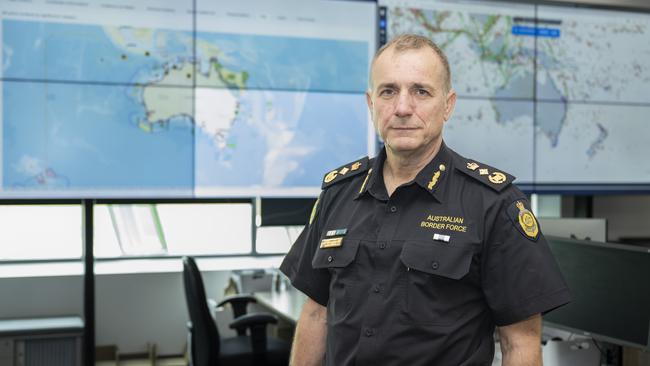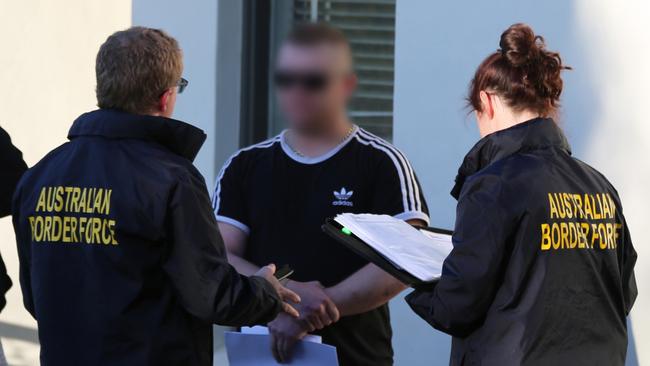ABF chief Michael Outram says AI will ‘change the border security game’
Border Force Commissioner Michael Outram reveals ‘advanced Targeting 2.0’ and a human-led tech force that uses AI to smash criminal syndicates.

The Australian Border Force commissioner says the immense power of artificial intelligence and quantum computing horsepower will transform law enforcement and help the country keep pace with the “volume and speed of global trade and travel”.
Michael Outram on Friday outlined his vision for a human-led tech force that harnesses the power of AI and quantum to smash criminal syndicates, monitor drug- and people-smugglers and detect future threats earlier.
While the ABF is already using specialised AI systems to analyse data “in close to real time, and at scale … to detect and disrupt all manner of criminal activities”, Mr Outram said the speed of technological advances was radically up-ending traditional law enforcement.
Speaking at a Leaders in Crisis Management forum in Singapore, Mr Outram said the ABF was “well advanced in developing our Targeting 2.0 capability” incorporating border-related threats, risks and vulnerabilities.
It was clear “our jobs and the world in which we operate are going to be very, very different in the coming years because of AI: planning, responding and recovering from crisis included”.
“AI is already giving us more capacity to detect and disrupt new threats at and before they even reach the border. Our budget and employee numbers will never keep pace with increases in the volume and speed of global trade and travel,” Mr Outram said.
“Targeting 2.0 seeks to apply the extraordinary power of AI to complement and amplify the deep expertise of our people, to identify new patterns at speed and at scale, to detect and disrupt crime as it happens, and, in time, to get ahead of the perpetual evolution of criminal activities.
“As AI continues to evolve we’re going to be able to look at an increasingly bigger picture and start addressing problems at the systems level – whether in terms of threat discovery, modelling or disruption.”
Mr Outram said the world was “at the beginning of the most profound, exciting, maybe even scary, technological transformation we may ever see”.
“We’re already imagining what Targeting 3.0 will look like. It will encompass all that we do, harnessing AI in ways that are still out of reach – for example by linking operational delivery and policy design and monitoring,” he said.

“Add in the incredible horsepower of quantum computing, and we’ll be able to have digital and policy twins of things as complex as the entire Australian border and all its related infrastructure and systems.
“We should eventually be able to model the effects of a crisis across the whole border continuum, more easily, and on an enterprise scale.”
There are many other technological advances contributing to the immense power of AI, including neural network architectures, edge computing, blockchain and augmented/virtual reality.” Mr Outram said governments must “gain social licences” to build trust in implementing rapidly evolving AI systems.
“Take truly seamless and contactless travel through digital borders. To collect the data we need from travellers, we need to emphasise the benefits of people providing their biometrics, for example. Travellers will reap economic and personal benefits like timesaving and convenience,” he said.
Human-centric measures of success would need to be embedded in budgeting and operating models so “our AI systems aren’t just based on being good value for money but also having a positive effect on people”.
Amid ongoing threats at Australia’s borders, Mr Outram said “we have to start building now to be ready for the future”, including assembling vast amounts of data ready to be fed into AI.




To join the conversation, please log in. Don't have an account? Register
Join the conversation, you are commenting as Logout